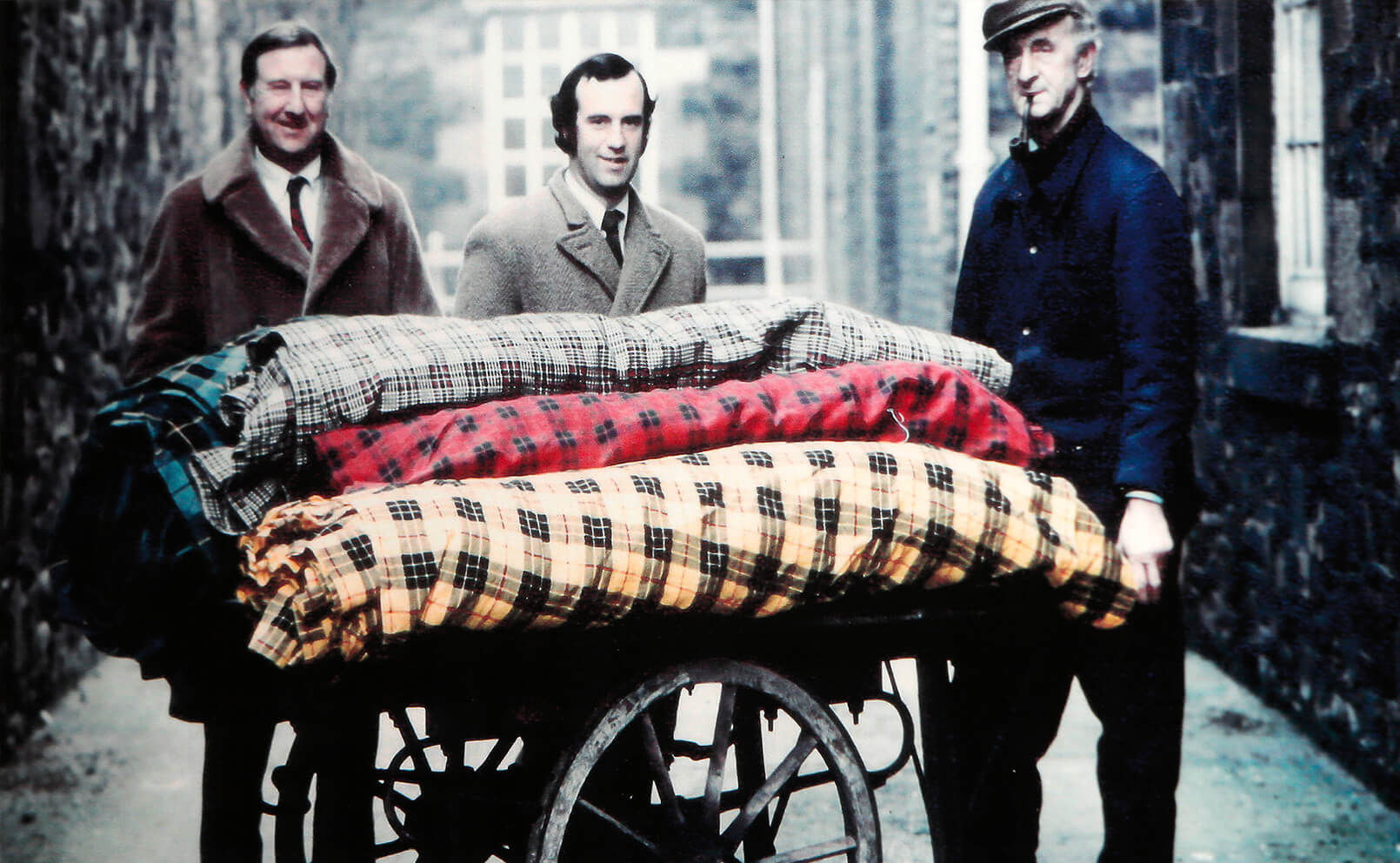Our Story
We take immense pride in the tartan textiles we make here in Scotland, with tartan being the thread woven through our history and is the story of our future. We aim to continue to reinvent and capture the enduring spirit of tartan and Scotland in each of our fabrics, scarves and accessories.

With over two hundred years of rich textile heritage, skilled craftsmanship, and contemporary design, Lochcarron of Scotland has been committed to developing some of the finest and traditional Scottish fabric from the beginning, constantly adapting to the new machinery and technology that fuels the textile industry. Traced back to 1892, the family business adapted to the market changes that it faced during World War II. Building a strong foundation of knowledge and passion that was sold onto Mr. John Morris Buchan, Lochcarron of Scotland in its current state can be traced back to this time in 1947. It was then that a small weaving mill in the village of Lochcarron, supporting local crofters began.
Specialising in tartan fabrics and accessories, markets for the tourist trade became strong in the 1950s and 1960s. This strength was seen not only in Scotland but also stretching out into the markets of Canada and America, which supplied Scottish Tartans and highland wear outfits across the globe. During this time, new fabric qualities were developed and opportunities for imported textiles for the fashion markets were recognised.
Over the years Lochcarron of Scotland has expanded its business opportunities and with that, its location. With our HQ located in Selkirk, the Scottish Borders, our production process is streamlined and efficient, preserving the traditional crafts involved in the textile trade and keeping quality at the forefront of our brand. We take immense pride in the tartan textiles we make here in Scotland, with tartan being the thread woven through our history and the story of our future. We aim to continue to reinvent and capture the enduring spirit of tartan and Scotland in each of our fabrics, scarves, and accessories.
Timeline
- 1949 The first Strome tartan is woven at Lochcarron of Scotland. Today, our Strome British Wool Kilting fabric range includes over 500 tartans.
- 1962 The brand expands and moves into bigger premises in Galashiels, just six miles away from our current HQ in Selkirk, 2022.
- 1974 Our portfolio was extended in with knitwear being added to our range.
- 1988 Lochcarron of Scotland helped host Fashion 88’ in 1988, which promoted Scottish Borders Textiles to an international stage with high-profile designers.
- 1990 The 90s were a big decade for Lochcarron of Scotland. Welcoming visits from Princess Anne, major investments into machinery and production equipment, new distribution offices set up in the USA and Canada and the launch of our still popular Diana, Princess of Wales Memorial Tartan all took place.
- 2006 Lochcarron locates to our current premises in Selkirk, into what was once Gardiners of Selkirk mill and is now Waverley Mill from Huddersfield Street in Galashiels.
- 2011 Sees a change from the East as Lochcarron of Scotland is bought by the Korean retailer Eland, welcoming new investments in machinery throughout the company.
- 2021 Lochcarron launched their 100 % British Wool Strome Premium Kilt cloth. This is a major move towards improving the company's ethical and sustainable credentials.
- 2022 Lochcarron of Scotland celebrates its 75th Anniversary and enjoys reconnecting with the customers through its popular Visitor Centre that has relocated into the HQ Mill on Rogers Road in Selkirk, continuing to flourish and reflect on the history of craftsmanship, heritage, and friendships that have evolved over the years while developing and adapting to key influencing factors in modern times.
